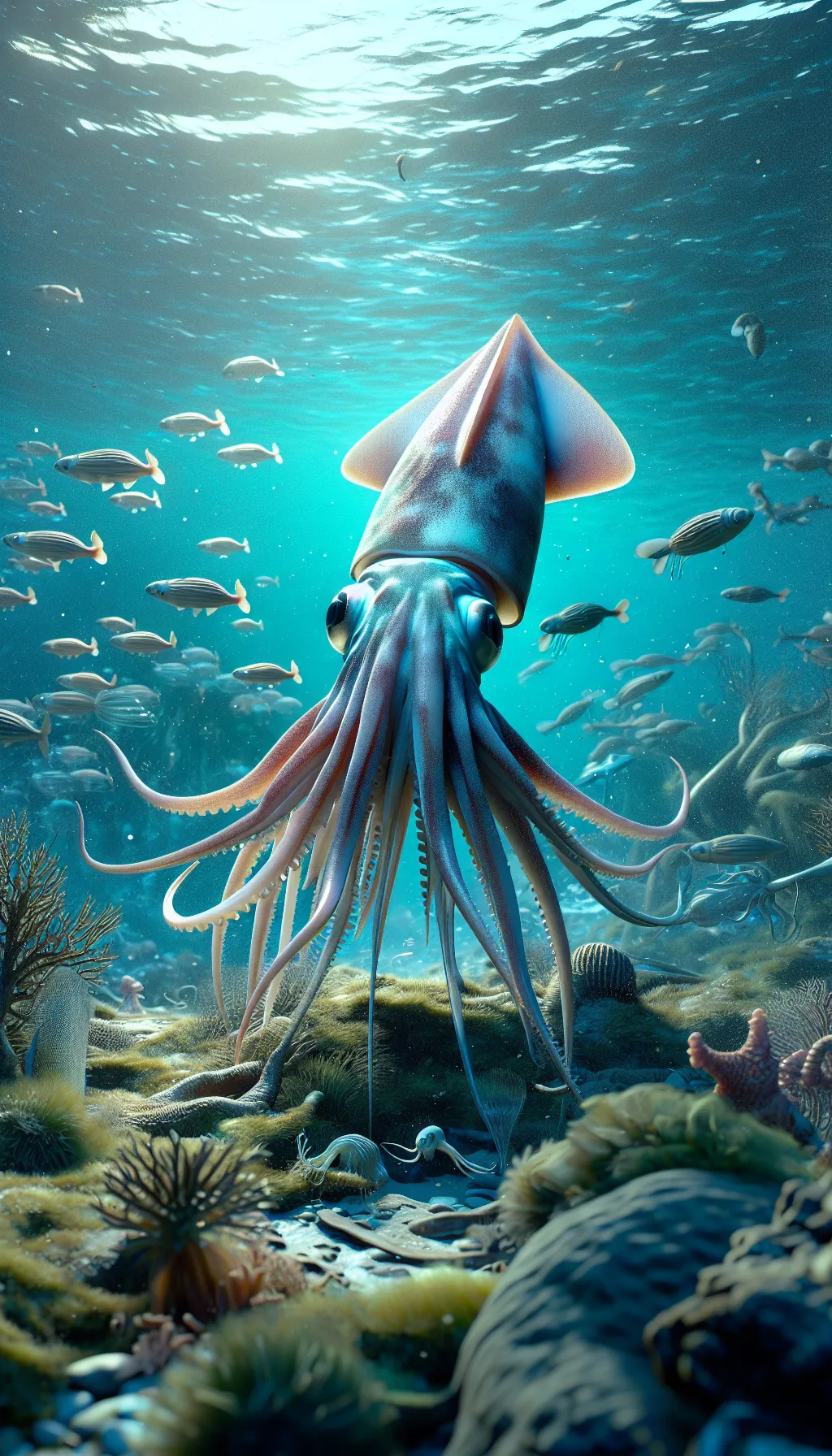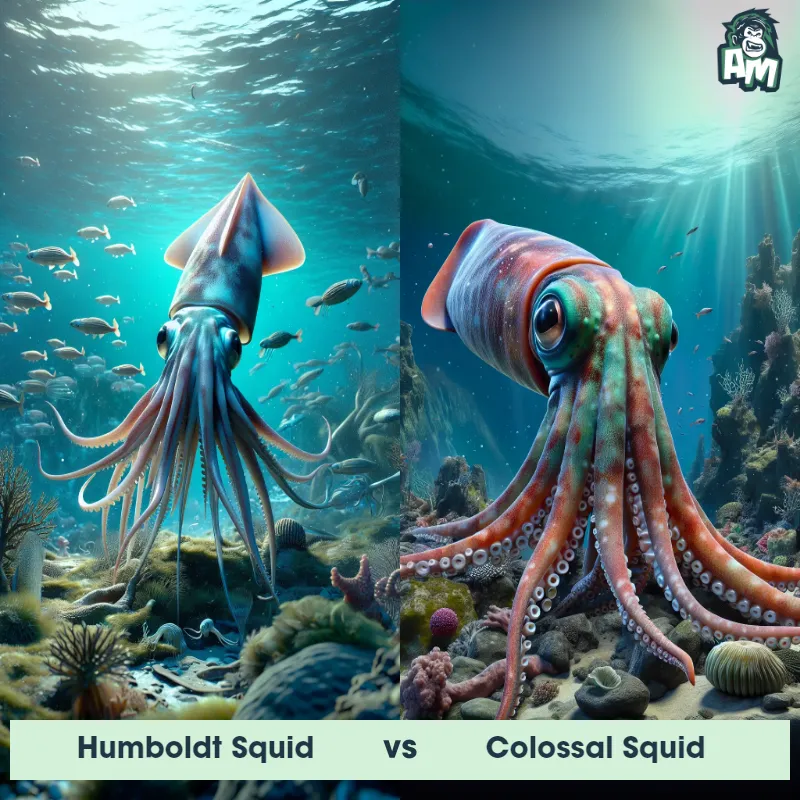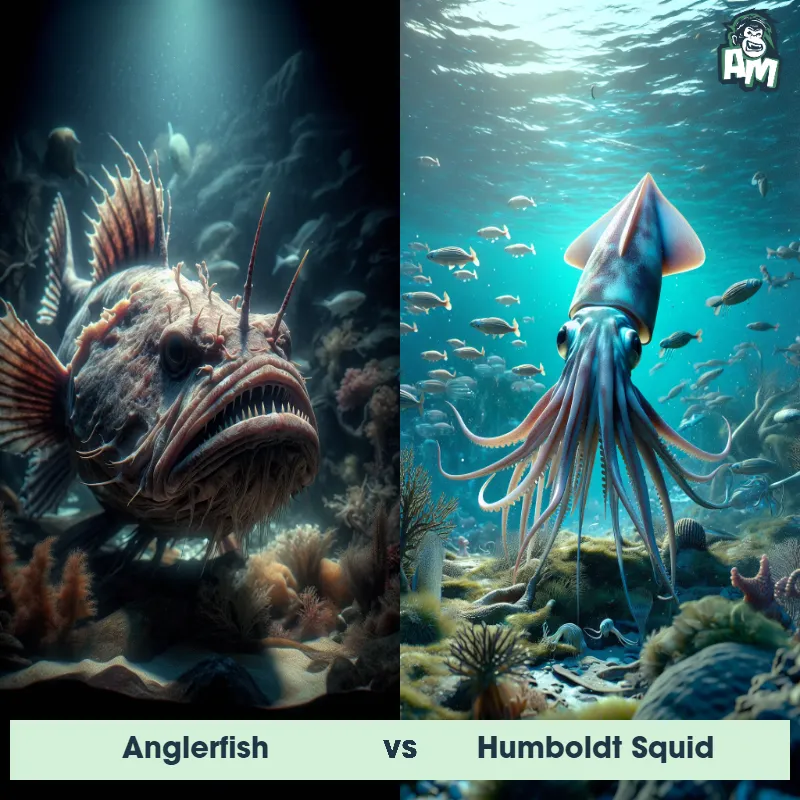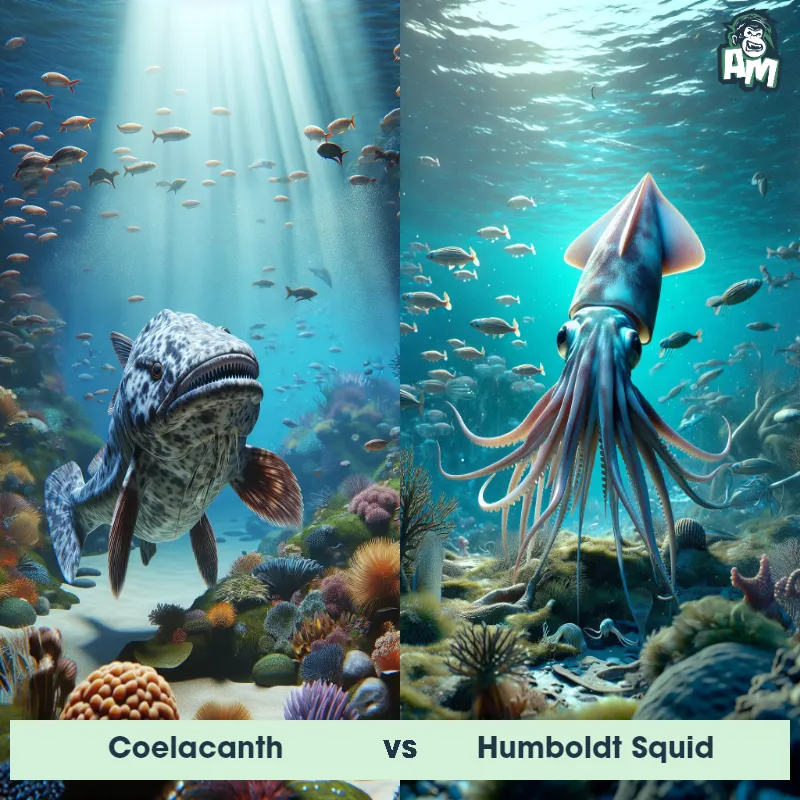The Humboldt Squid
The Humboldt Squid, also known as the jumbo flying squid, is a large predatory cephalopod found in the Eastern Pacific Ocean. These squids can grow up to 7 feet long and weigh up to 110 pounds, making them one of the largest squids in the world. They are known for their reddish-brown or purple bodies and long tentacles. Humboldt Squids have sharp beaks and suckers on their arms to capture and devour their prey. They are highly intelligent creatures and are known for their aggressive and voracious hunting behavior.

| Humboldt Squid | |
|---|---|
| Size | Up to 7 feet long (2.1 meters) |
| Weight | Up to 100 pounds (45 kilograms) |
| Speed | Speed: 15 mph (24 km/hr) |
| Key Strength | Powerful tentacles with sharp hooks |
| Biggest Weakness | Vulnerable to attacks on the mantle |
| Scientific Name | Dosidicus gigas |
| Family | Ommastrephidae |
| Habitat | Open ocean |
| Geography | Eastern Pacific Ocean |
| Diet | Fish, crustaceans, and other squid |
| Lifespan | 1 year - 2 years |

The Humboldt Squid
The Humboldt Squid, also known as the jumbo flying squid, is a large predatory cephalopod found in the Eastern Pacific Ocean. These squids can grow up to 7 feet long and weigh up to 110 pounds, making them one of the largest squids in the world. They are known for their reddish-brown or purple bodies and long tentacles. Humboldt Squids have sharp beaks and suckers on their arms to capture and devour their prey. They are highly intelligent creatures and are known for their aggressive and voracious hunting behavior.
Fun Fact: Humboldt Squid are capable of bioluminescence, meaning they can produce their own light.
| Humboldt Squid | |
|---|---|
| Size | Up to 7 feet long (2.1 meters) |
| Weight | Up to 100 pounds (45 kilograms) |
| Speed | Speed: 15 mph (24 km/hr) |
| Key Strength | Powerful tentacles with sharp hooks |
| Biggest Weakness | Vulnerable to attacks on the mantle |
| Scientific Name | Dosidicus gigas |
| Family | Ommastrephidae |
| Habitat | Open ocean |
| Geography | Eastern Pacific Ocean |
| Diet | Fish, crustaceans, and other squid |
| Lifespan | 1 year - 2 years |
Humboldt Squid Matchups
We use AI to simulate matchups between the Humboldt Squid and other animals. Our simulation considers size, strength, and natural predatory behaviors to determine the most likely outcome.

Can't find the Matchup you want?
Create Your Own MatchupHumboldt Squid: Diet, Predators, Aggression, and Defensive Behaviors
What do Humboldt Squid eat?
Humboldt Squid are voracious predators that primarily feed on small fish, shrimp, and other squid. They have been known to form large hunting groups to take down larger prey such as fish and even other squid species. Their large beaks and strong tentacles allow them to efficiently capture and consume their prey.
Do Humboldt Squid have any predators?
Despite being formidable predators themselves, Humboldt Squid have a few natural predators, including large fish such as sharks and swordfish. Additionally, sperm whales are known to prey on Humboldt Squid and have been observed hunting them in deep waters.
Are Humboldt Squid aggressive?
Humboldt Squid are known for their aggressive and territorial behavior, especially when feeding or competing for resources. They have been documented displaying aggressive behaviors towards divers and fishermen, including flashing their bioluminescent spots, changing color rapidly, and jetting away at high speeds.
Do Humboldt Squid fight with each other?
Humboldt Squid are known to engage in intraspecific aggression, especially during feeding frenzies and mating rituals. They have been observed using their powerful tentacles to wrestle with each other and establish dominance within their groups. These fights can result in injuries and even death among the individuals involved.
How do Humboldt Squid defend themselves?
Humboldt Squid have several mechanisms for defending themselves against predators and threats. They are capable of producing bioluminescent displays to confuse and disorient attackers. Additionally, they can eject ink to create a smokescreen, allowing them to make a quick escape. Their rapid swimming and agility also enable them to evade potential threats.
What is the biggest weakness of Humboldt Squid in a fight?
Despite their aggressive behavior and powerful tentacles, Humboldt Squid have a critical weakness in their skin. Their outer layer is relatively thin and can be easily damaged by sharp objects or aggressive predators. Once their skin is breached, they are vulnerable to infections and injuries that can significantly impact their survival.
Fun Fact: Humboldt Squid often travel in large groups called shoals or squads, consisting of thousands of individuals.
Fun Fact: Humboldt Squid have been known to breach the water's surface or even fly for short distances, earning them the nickname "jumbo flying squid."













